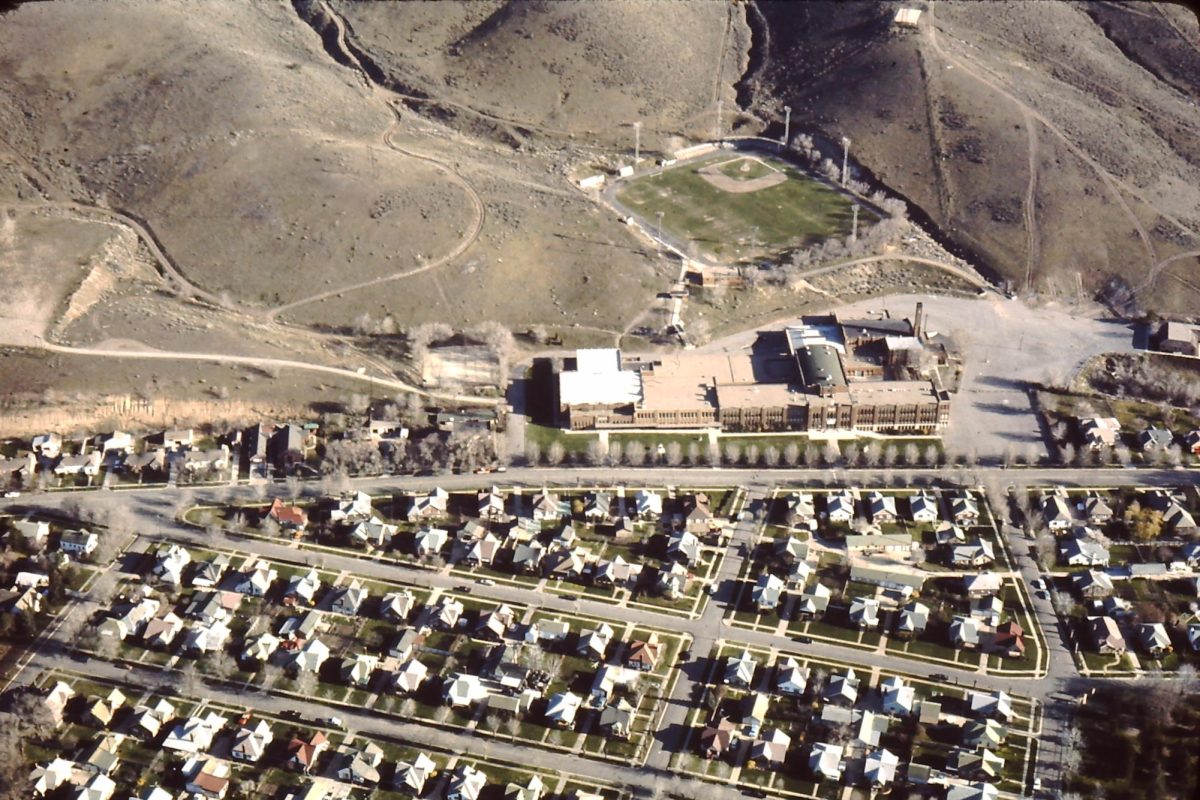 Bingham High School Fifty Years Ago
Bingham High School Fifty Years Ago
(Part II in a series)
by Scott Crump
In our first article of “Bingham High School Fifty Years Ago,” we looked at the planning, construction and naming of the new Bingham High School in South Jordan. This article will discuss the issues faced by Bingham Miners as they transitioned from at the Copperton Bingham High to the South Jordan location.
TRANSITIONING TO A NEW BINGHAM HIGH
While construction on the new school proceeded, plans needed to be developed for the transition from the old school to the new school. This transition would be led by Dr. Thomas Owen (1973-1977), who was appointed to replace Glen Beere as principal. Dr. Owen immediately fell in love with Bingham High and its traditions and made it his goal to make the transition from the old Bingham High to the new one as smooth as possible. He recalled his first visit to the Copperton school. Parking his car on the east side parking lot, he walked up the front stairs and into the front entrance. Gazing at the school seal on the floor and the copper mine mural on the wall in front of him, he could physically feel the traditions and greatness of Bingham High School. Walking through the halls of the historic building, he could tell that Bingham was a special place. As he met the students over the next few months, his impressions of Bingham’s greatness were reinforced. Miner students were obedient, friendly, and cared for each other. He was proud to be a part of the Bingham family.
Principal Owen’s time over the next two years would be dominated by three main tasks: training a faculty and devising curriculum to teach in the new open plan school, supervising the new school’s construction in South Jordan, and running the regular school program in Copperton. The goal through all of these activities was to pick up the old Bingham High School—traditions and all—and bring it to the new building in South Jordan. Since Bingham would be the first open plan high school, everything connected with it was an experiment. As a result, learning by trial and error became a common occurrence. Teacher selection became an especially sensitive issue because the vast majority of the faculty wanted to continue teaching at Bingham, but some were hesitant about teaching in an experimental open plan school. Eventually, most of the Copperton faculty ended up going to South Jordan, but a few remained behind at the old school, either by their own choice or the principal’s choice. In addition to the Bingham faculty at the time, a number of other teachers willing to be part of an open-space school were chosen from throughout the Intermountain West to come to Bingham. Most teachers had mixed feelings when contemplating the move to a new school. Although they looked forward to the construction of a larger school to relieve chronic overcrowding, teachers—like Paul Newton, who had grown to love Bingham High and its students during the 25 years he had spent at the Copperton school—could not help but feel a twinge of nostalgia for the historic building they would leave behind. (231)
Construction issues were constant challenges. Before construction could proceed, the school site required extensive leveling, because of the large rise to the south and a hill on the west. In the excavation process, an ancient Fremont Indian fire hearth and accompanying Indian artifacts were unearthed. An archaeological dig was established and later reported in a scientific journal. (232) Architectural design problems also presented major challenges. Dr. Owen noticed that the plans called for the same number of administrative and counselors’ offices in the new school as there were in the old even though projections indicated that Bingham could add as many as three or four vice principals and the same number of counselors in the future. Change orders were made and new offices were added at considerable extra expense by eliminating the space allocated for the faculty room and adjusting other offices. Many expressed concerns about the openness of the library-media center and its wide open second floor balcony, but with the school already running over budget, nothing was done to address this issue or other perceived design flaws. Principal Owen was constantly working with construction manager, Rock Campbell, to make sure each step of the construction process proceeded as smoothly as possible. (233)
While the new school was being built, the overcrowding at the Copperton school required that every square inch of the building be put to use. Copperton Elementary School (closed in 1972 due to declining enrollment), which was located south of the Copperton Park on the opposite side of town, was utilized to house the art department and a number of other classes. Instruction also took place in the cafeteria, storage rooms, and any other possible place until the move to the South Jordan building could take place.

